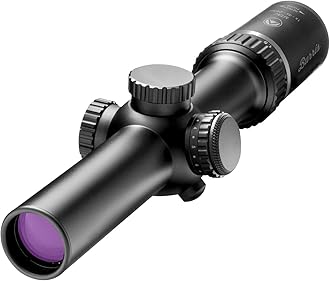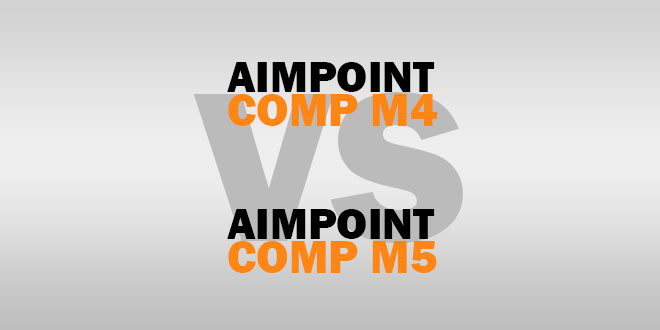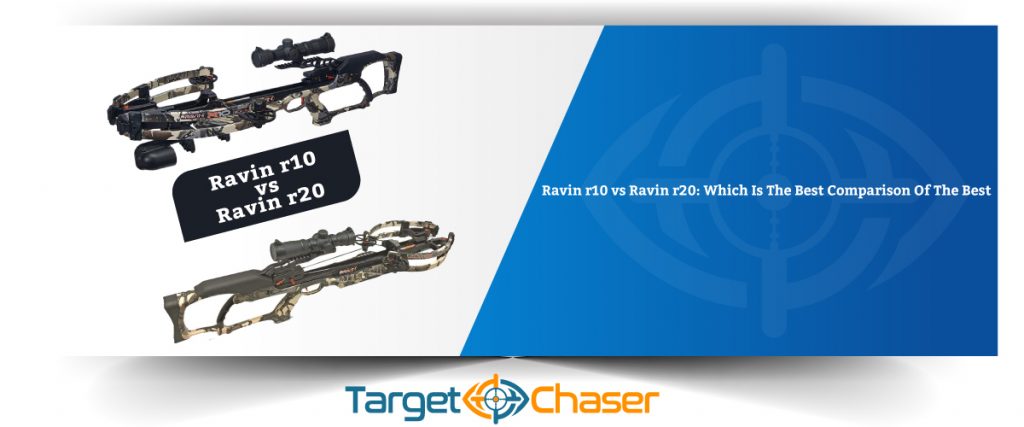The legendary Burris MTAC riflescope has always been the first choice of big game hunters and competitive shooters. However, the price range has always been a big concern for budget-friendly shooters.
That’s where the Vortex Strike Eagle comes in. Vortex Optics has always been very attentive to the quality they offer in the limited price range. The recently added Vortex Strike Eagle stands as a perfect competitor for the Burris MTAC rifle as you will find many similar features in both of them.
You will find all the features listed in the specification table below so that you can compare them side by side. Later we will discuss the contrasting characteristics to find out which scope has better quality.
That way you will know which one to choose for your rifle and make the best use of your money. So let’s begin!
Vortex Strike Eagle/ Burris MTAC – Outlooks


Specs
| Specs | Burris MTAC | Vortex Strike Eagle |
|---|---|---|
| Magnification | 1-4x | 1-6x |
| Objective Lens | 24mm | 24mm |
| Reticle | Ballistic CQ | AR-BDC3 |
| Illumination | ✔ (10 levels) | ✔ (11 levels) |
| Focal Plane | SFP | SFP |
| Eye Relief | 3.5-4 in | 3.5 in |
| Battery | CR2032 | CR2032 |
| Tube Diameter | 30mm | 30mm |
| Turrets | Capped Tactical | Low Capped |
| Field of View | 100–32 ft per 100 yds | 116.5-19.2 ft per 100 yds |
| Adjustment Graduation | 0.5 MOA | 0.5 MOA |
| Max W/E Adjustments | 130 MOA | 140 MOA |
| Parallax | ✖ | ✔ (100 yds) |
| Weight | 14.5 oz | 18.5 oz |
| Waterproof | ✔ | ✔ (IPX7) |
Key Contrasts
Both the rifle scopes have many similar features but what we need is the differences between them to compare the scopes and reach our final verdict. Then let us list out the contrasts.
- The scopes have different magnification ranges and objective lenses.
- They use different types of reticles that accommodate various kinds of shooting purposes.
- Although both lenses have similar glass construction, they have different illumination and tinted shadows for separate uses.
- You will find a massive difference in the battery life in both scopes. One of them offers more brightness settings than the other as well.
- Both the scopes have capped turrets but again they have separate purposes.
- Also, the windage and elevation adjustments are better in one of them.
- You will find both models working for the 5.56 cartridges but their weight is something to consider for certain weapons.
Read More: Strike Eagle vs Primary Arms
In Depth View
As listed above, we are now going to elaborate on all these contrasting qualities to conclude the best scope for your weapon.
Magnification & Objective lens
When we compare the magnification ranges and objective lenses both offer, we will find that they have quite some options to provide. But let’s compare the most popular ones.
MTAC: The Burris MTAC 1-4x magnification range along with a 24mm objective lens gives you the versatility you are looking for when it comes to covering both the close and mid-range targeting. While the 24mm might not be the best one to attract lights in darker settings, its night vision compatibility will surely make the situation much better.
Strike Eagle: While you are getting a good variable magnification range from the Burris MTAC riflescope, the Vortex Strike Eagle offers a better deal in providing a 1-6x magnification range to allow you to shoot anything within a range of 200 yards. The objective lens is nothing better than the Burris one but you will find better lenses in the series if you want, such as a 56mm one.
Therefore, with the magnification range Vortex Strike Eagle is providing it will be harder to look at something else.
Reticles & Lens Clarity
Reticles are essential parts of any scope as they are here to give you the correct measurements for the precise shot you will need to capture your target.
MTAC: Burris MTAC is very famous for the introduction they give the shooters to the combat world with its illuminated ballistic CQ and AR reticles. But here we will be concentrating on the CQ reticle only which perfectly suits any competitive or tactical needs.
The small reticle dots of this scope work the best for any trajectory compensation holding out to 600 yards for strong cartridges like the 5.56 and 7.62 ones. Its anti-reflective and fully multi-coated lens gives you solid support during low light conditions with accurate color fidelity.
Strike Eagle: On the other hand, you will find an upscaled glass-etched AR-BDC3 reticle in the Vortex scope as it aids in a rapid shooting experience with your AR-15 5.56 cartridges. This comes with a thread-in throw lever that assures you will be on your target with every shot for faster acquisition.
There is a 1 MOA center dot to provide an accurate point of aim along with a broken circle of 16.625 MOA surrounding the center spot to keep you focused out to 650 yards. The lens glass has a similar multi-coating you will find in the MTAC scope as well but with a slightly red or orange tint.
Both being placed in the rear focal plane, the Strike Eagle stroke surely tempts us with a better deal with the strong reticle it offers.
Battery & Brightness Settings
As you can see from the specification, both the scopes come with a CR2023 lithium battery that has a lifetime of almost 8 years with proper care. However, they perform very differently when it comes to these models.
MTAC: The MTAC scope by Burris can give 5000+ hours of runtime for continuous use even with the highest brightness setting. As the reticle is illuminated you are getting 10 levels of brightness settings to adjust with any lighting condition.
The control of these brightness levels is maintained through a rotary dial which also serves as a “battery saving” option. With this feature, you will be able to save up to 2 hours of battery life.
Strike Eagle: Whereas, when we test the battery life of the Vortex Strike scope, it seems the optics can only provide you with a continuous use of 150 hours for the brightest settings. Although you are getting one extra brightness level than the MTAC one, the poor battery runtime is still a disadvantage for this scope.
Hence, in terms of giving sufficient work time, the MTAC scope surely does its job.
Turret Adjustments
Both these models come with capped turrets and 0.5 MOA adjustment graduation. But we need to look at what the actual difference is between this two scope.
MTAC: The tactical capped turrets are good for preventing any external factors that can cause harm to the scope. You are also getting a maximum of 130 MOA of both windage and elevation adjustments. Although you can reset zero easily after sighting, the clicks are not audible so you need to be alert at all times to make sure you are starting from the correct position. Besides, the scope does not provide any parallax correction.
Strike Eagle: Strike Eagle’s turrets are low capped and have an audible click value of 0.5 MOA to let you know how much you are changing with an easy zero reset. In addition, the scope can give a maximum of 140 MOA of windage and elevation adjustments along with parallax correction to 100 yards.
Although lockable turrets would have ensured better holdover resetting zero in the case of both the scopes, this round goes to the Vortex Strike Eagle only because you are getting more adjustments for wind drift.
Durability & Weight
When it comes to comparing the housing materials of both scopes, they have an aluminum-constructed single tube with a 30mm diameter.
MTAC: The Burris MTAC scope aside from the aluminum housing, is waterproof and fogproof as it is nitrogen-filled. It only weighs 14.5 ounces which is quite light considering other scopes in the market.
Strike Eagle: With a similar build as the MTAC scope, the Vortex Strike Eagle has a water-resistant level of IPX7. It also has a scratch-free lens because of the Armortek coating which is a signature feature of any Vortex product. The only downside of this scope is its weight. The scope weighs 18.5 ounces which is heavy for most of the shooters to carry around.
In terms of durability both the scopes ensure a great performance. But Burris MTAC is the winner of this round since it weighs less than the Vortex scope.
Summary
To sum up, both the Burris 1-4×24 MTAC and Vortex Strike Eagle 1-6×24 scopes are two strong opponents. As we can see from the comparison above these scopes offer some lucrative features that anyone will want for their rifles.
The Burris scope works well for any 3-gun style weapon for big game hunting and shooting competition. Whereas, the Vortex Strike Eagle scope is a perfect companion for the AR-15-style rifles with its specialized AR-BDC reticle.
For what you are getting within the price range, the Vortex scope is undoubtedly more cost-effective and a better choice for any rifle owner.
Hi, I’m Brent Hansford. A writer turned hunter & now sharing my love for the sport through writing. As I practically breathe weapons, I firmly believe I’m capable of providing you with new knowledge about firearms and hunting. My mission is to help more people get better at hunting & master the weapons. Let me help with unleashing the beast within you!



